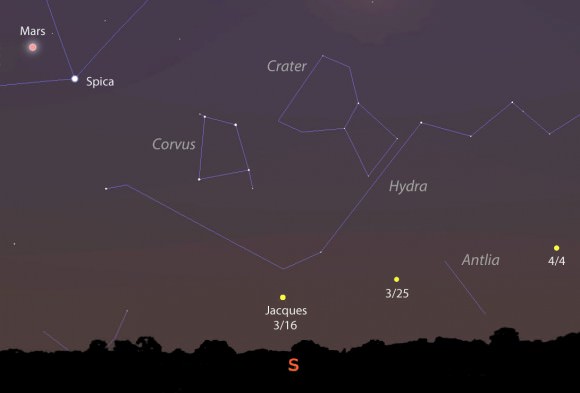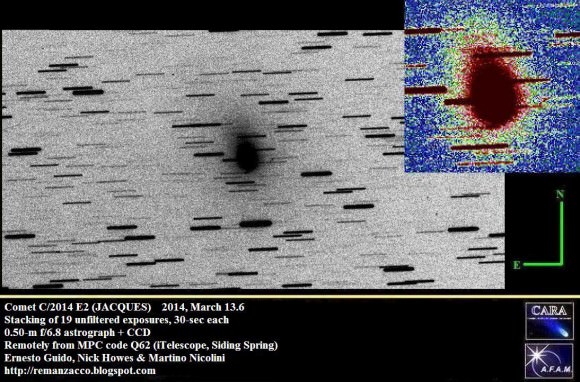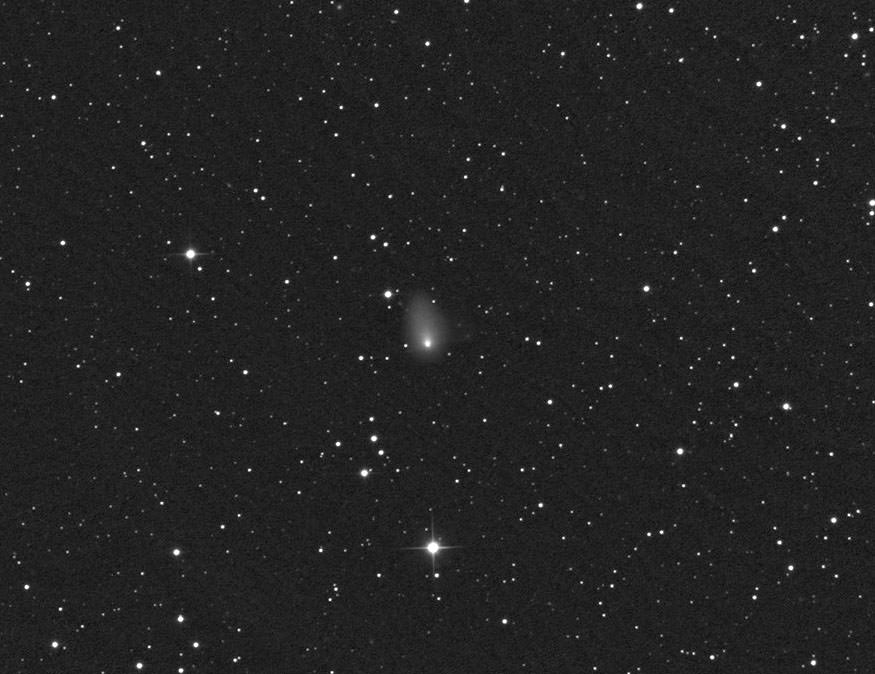Congratulations to Cristovao Jacques and the SONEAR team! On March 13 they snared C/2014 E2 (Jacques) in CCD images taken with a 0.45-meter (17.7-inch) wide-field reflector at the SONEAR (Southern Observatory for Near Earth Asteroids Research) observatory near Oliveira, Brazil. A very preliminary orbit indicates its closest approach to the sun will occur on June 29 at a distance of 56 million miles followed two weeks later by a relatively close flyby of Venus of 0.09 a.u. or 8.4 million miles (13.5 million km). If a comet approached Earth this closely so soon after perihelion, it would be a magnificent sight. Of course, watching from Venus isn’t recommended. Even if we could withstand its extreme heat and pressure cooker atmosphere, the planet’s perpetual cloud cover guarantees overcast skies 24/7.

It’s the team’s second comet discovery this year after turning up C/2014 A4 (SONEAR) in January. Comet Jacques has been tracking across northern Centaurus since discovery. Over the next few nights, it straddles the border with Hydra where it will be visible low in the southern sky around for northern hemisphere observers from about midnight to 2 a.m. If you live on a Caribbean island and points south your view will be even better.
Steven Tilley’s animation of Comet C/2014 E2 Jacques over 35 minutes on March 13, 2014
Comet Jacques exhibits a dense, fairly bright 2-arc-minute coma or cometary atmosphere with a short northward-pointing tail. Brightness estimates have been hard to come by, but it appears the comet may be around magnitude +11.5 – 12 or within range of an 8-inch (20-cm) or larger telescope. One thing’s for certain. In the coming weeks, E2 will be approaching both the Earth and the sun and brightening as it slowly gains altitude in the evening sky.

Shortly after perihelion, Comet Jacques will shine brightest at around magnitude +10-10.5 (though it could be brighter) and remain nearly this bright as it swings north from Orion into Perseus from mid-July to mid- August. Closest approach to Earth occurs on Aug. 29-30 at 54 million miles (87 million km). It will join Comet Oukameiden – predicted to reach binocular visibility in late August – to offer comet lovers much to look forward to as the summer wanes.


Way groovy cool! Hope to see it! AND you ‘scooped’ SkyHound’s comet list…. Maybe someone should mention it to them? ~@; )
Updates appreciated.
Imagine a CME smacking into the comet and lighting it up BIG TIME just before closest approach to Venus! BANG! Suddenly hundreds of millions of people more interested in astronomy? (Dark sky dependent) Of course, that’s what was said about Comet ISON before it’s lackluster passage…. so this one might be a hard sell after the ‘dud’? A late summer comet! Mmmmm… warm…. Yes!